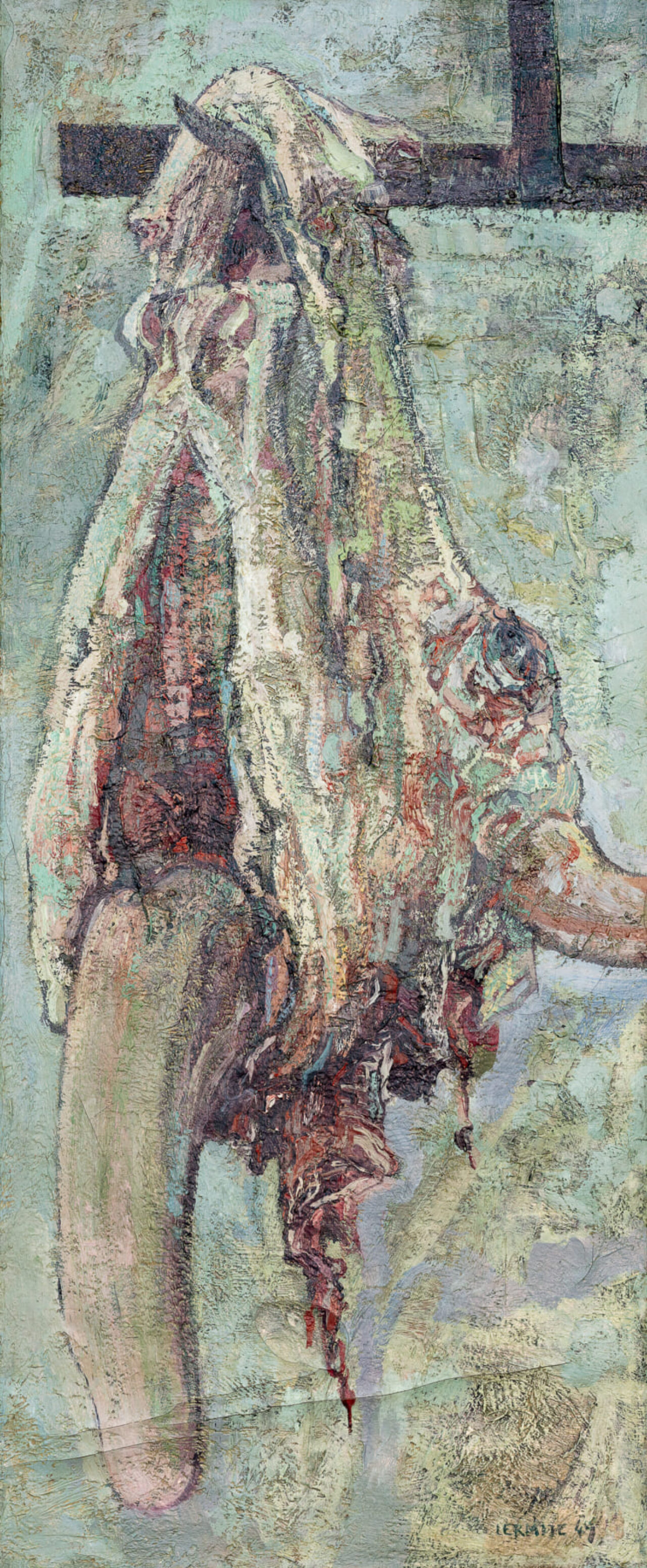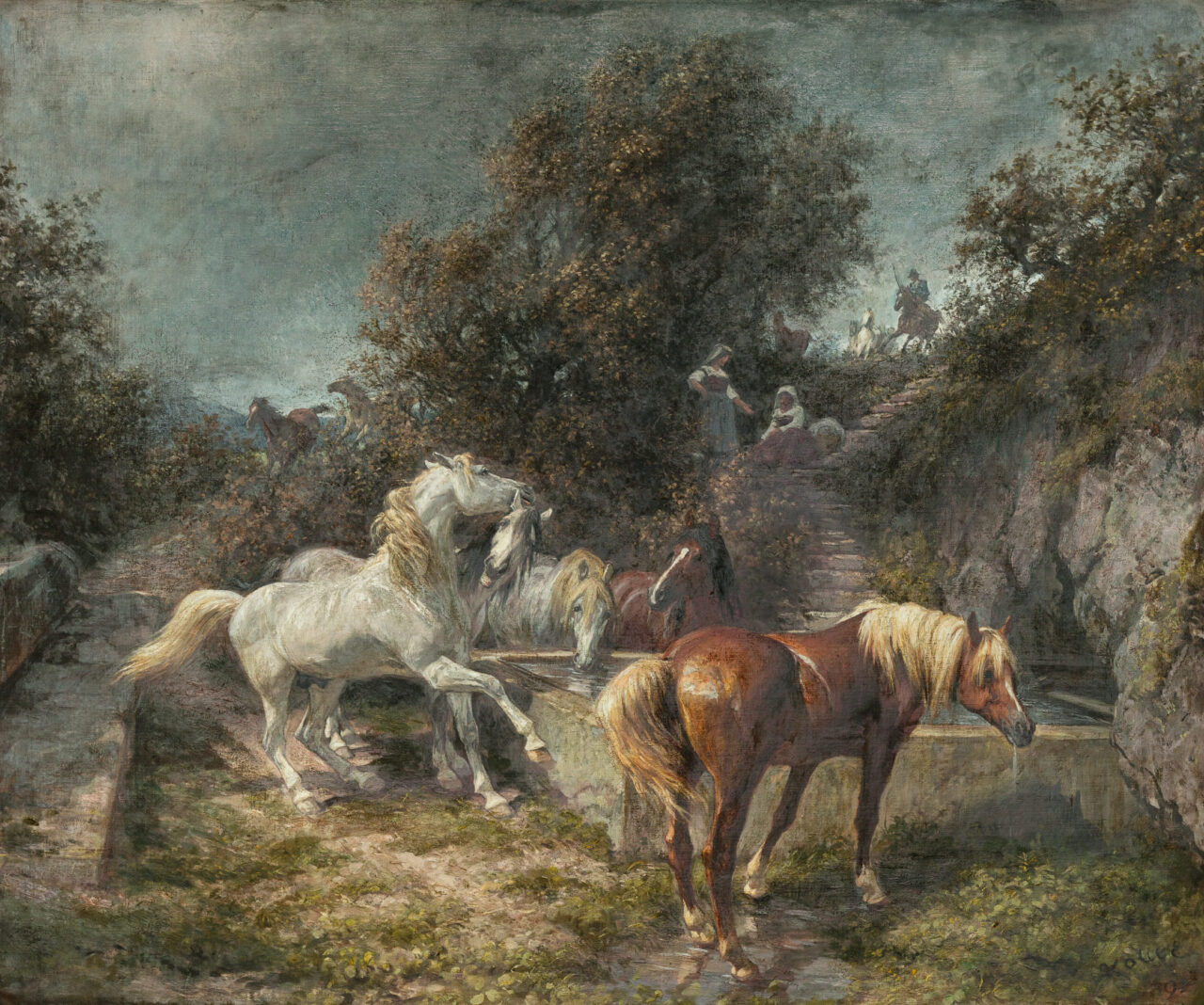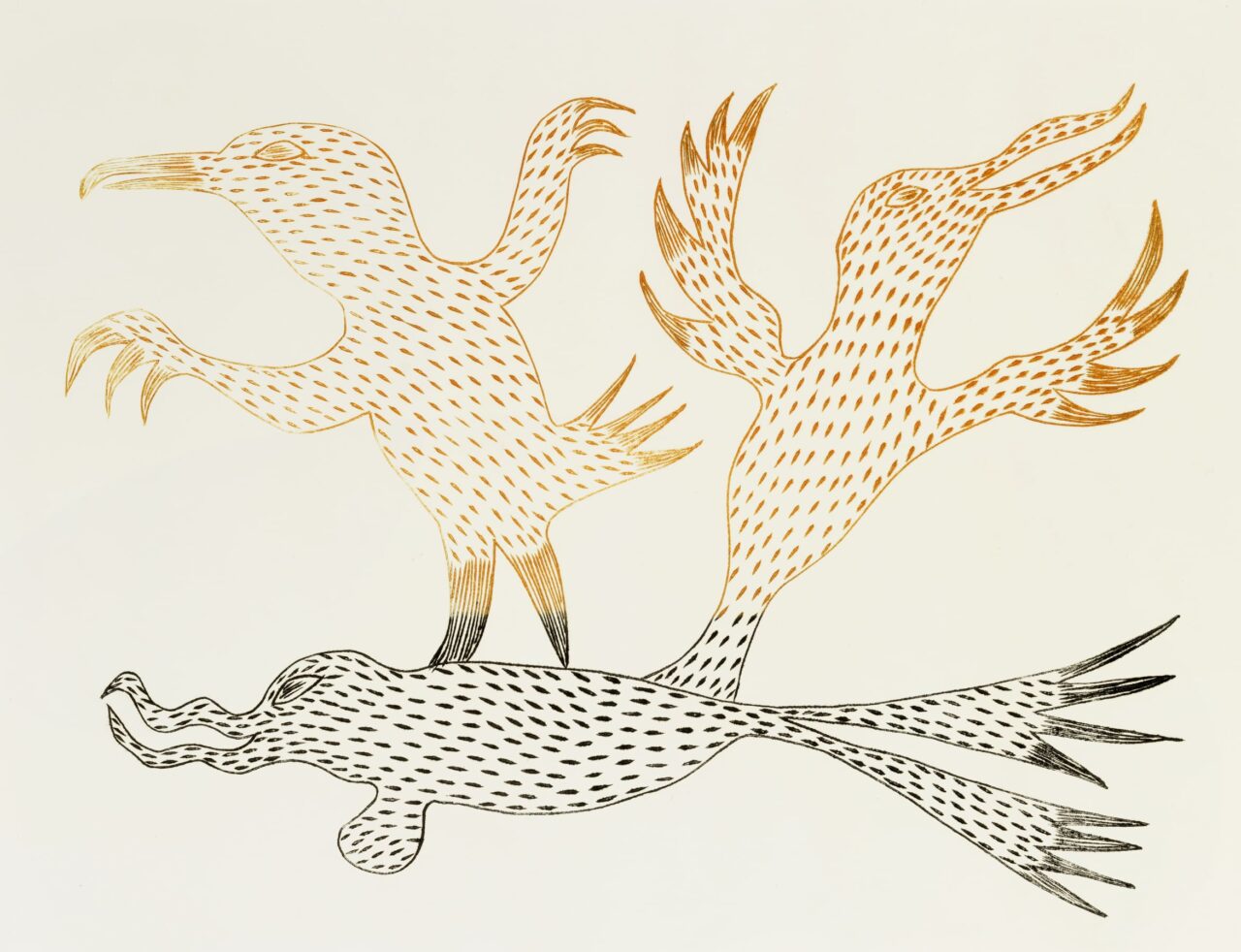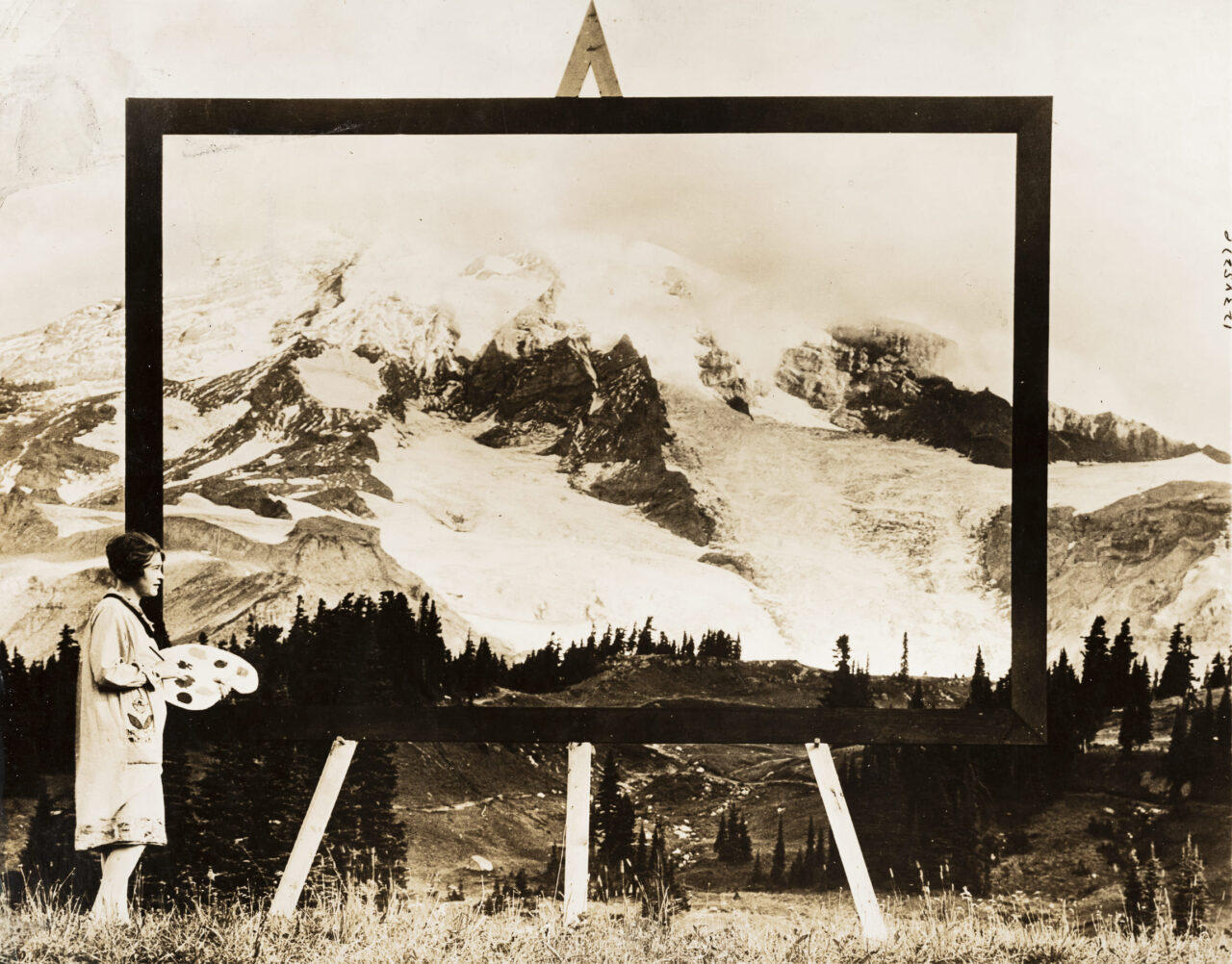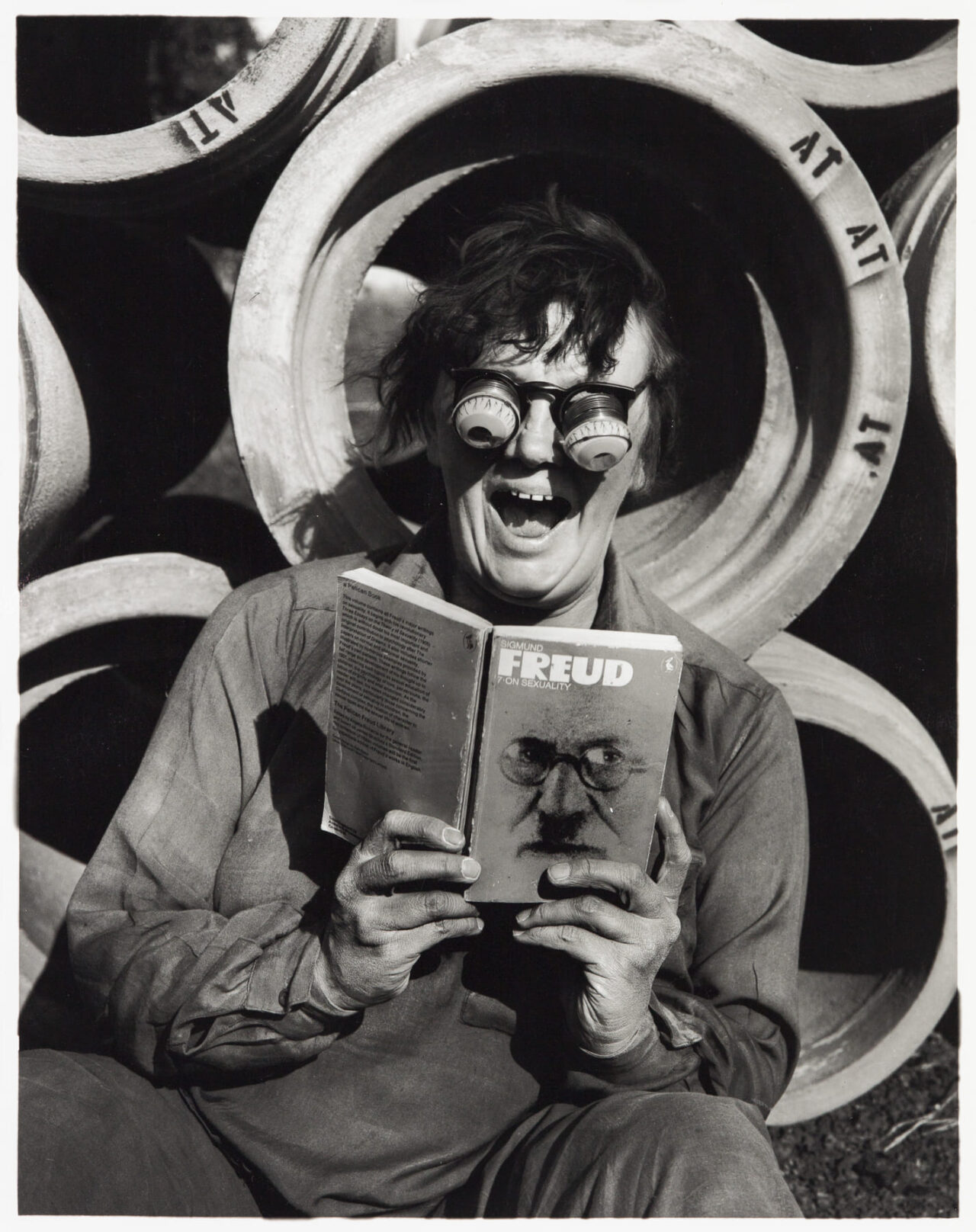Born in Le Locle, Jean-Pierre Schmid relocated to La Brévine in 1946, settling in an isolated farmhouse in Les Cuches, known as “L’Ermitage”, earning him the nickname “l’ermite”. A prominent regional artist, Lermite studied under Ernst Ruprecht at the Bienne School of Art and underwent various stylistic phases. Initially influenced by German Expressionism and Constructivism, the artist later returned to figuration, as seen in his depiction of an ox head suspended by the snout. Originally a black pencil study, now it stands as a work in its own right. It portrays torn flesh, a hanging tongue and bloody vertebrae, symbolizing the vulnerability of farm animals to human needs. Lermite uses complementary colors, from gray to green, with hints of mauve, particularly in the background. This still life evokes Rembrandt’s Le Bœuf écorché, created in 1655, which carries the same moral significance as a memento mori and impresses with its lifelike rendering of materials and flesh. Charles Soutine drew inspiration from it, producing a work of the same name in 1925, also showcasing an expressionist style that characterized the artist until the late 1950s. This work was featured at MBAL during the exhibition animal instinct/instinct animal (2023-2024).
Following Lermite’s death in 1977, a Foundation was established in his memory to promote his work beyond the Neuchâtel region. The Foundation is now based at MBAL, which also houses Lermite’s complete graphic oeuvre, a donation the artist himself requested during his lifetime.
Oil on canvas, inv. MBAL/FL 52


